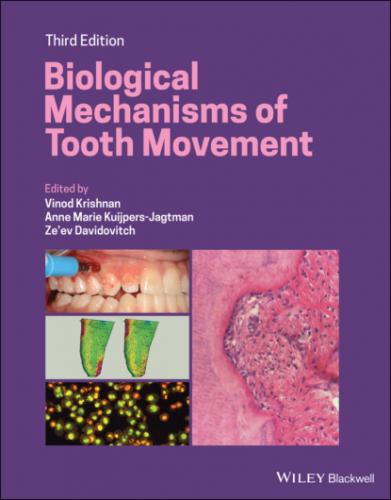Biological Mechanisms of Tooth Movement. Группа авторов
Antiresorptive agents Asthma medications Corticosteroids Antihistamines Statins: cholesterol‐lowering drugs Drugs inducing gingival enlargement Anticholinergic drugs Psychiatric drugs Hormonal influences on tooth movement Effects of vitamins, minerals, and diet on tooth movement Vitamins Minerals Fluoride Lipids Substance abuse and OTM Conclusions References
13 PART 5: Rapid Orthodontics CHAPTER 15: Biological Orthodontics: Methods to Accelerate or Decelerate Orthodontic Tooth Movement Introduction Early attempts to accelerate tooth movement Accelerating tooth movement: pharmacological approaches Accelerating tooth movement: physical stimuli Surgical approaches Methods to decelerate tooth movement Conclusions References CHAPTER 16: Surgically Assisted Tooth Movement: Biological Application Introduction Surgically assisted tooth movement Biological principles and biomechanical considerations Historical background A different perspective: six rules for effective alveolar corticotomy Clinical examples Conclusions References CHAPTER 17: Precision Accelerated Orthodontics: How Micro‐osteoperforations and Vibration Trigger Inflammation to Optimize Tooth Movement Introduction Sculpting biphasic theory from the bedrock of data Saturation of the biological response: more does not mean faster MOPs: hyperlocalized inflammation for safe, minimally invasive accelerated tooth movement Good vibrations: catabolic response during OTM Conclusion References
14 PART 6: Long‐term Effects of Tooth‐moving Forces CHAPTER 18: Mechanical and Biological Determinants of Iatrogenic Injuries in Orthodontics Introduction Intraoral iatrogenic effects Gingival effects Periodontal changes and alveolar bone loss Tooth‐related changes Soft tissue irritation Cytotoxicity and allergic reactions Extraoral iatrogenic effects Systemic risks Swallowing or inhalation of small parts Conclusions References CHAPTER 19: The Biological Background of Relapse of Orthodontic Tooth Movement Introduction Relapse, physiologic recovery, or aging? The process of relapse Collagen fibers of the periodontium and relapse Oxytalan fibers Conclusions References
15 PART 7: Tooth‐movement Research CHAPTER 20: Planning and Executing Tooth‐movement Research Introduction The scientific method Evidence generation Methodologies for tooth‐movement research Studying mechanobiology Conclusions References
